by Travis Day
GoPhilanthropic Foundation Director of External Communications and
GoPhilanthropic Travel Director of Operations & Guide
Over the course of the last two years I have participated in four GoPhil journeys to Guatemala, while making a total of eleven trips to this fragile yet stunning country within that same window of time. Given my close proximity – living in nearby Costa Rica – it has become one of my most frequented and favorite destinations. A place where I feel quite at home, where I can really dig in and learn more about mesmerizing Mayan culture, and ultimately, take time to ‘listen and learn’ with an incredible network of amazing people.

I have traveled with GoPhil groups both large and small, and I am always astounded by the amount of collective heart that exists within a group of GoPhil travelers. On this most recent journey I had the pleasure of sharing space with Cynthia (GoPhil Ambassador) and her husband Richard, as well as their lifelong friend, Mark. Cynthia and I traveled together in India earlier this year, and Mark and his wife Judi – who also traveled to Guatemala in April 2018 with her cousin Merry – joined GoPhil during last year’s Journey to Southeast Asia. We were a small and intimate group, and given our past travels together, a lovely level of comfort existed before we even hit the ground.
Also worth noting is the fact that Richard, Cynthia and Mark have spent the better part of their lives working in healthcare in various fields. As such, their understanding of complex social issues, vast knowledge in healthcare and education, as well as a continued interest in the work of GoPhil and its partners created space for incredible, thought-provoking conversations.

Guatemala really is quite complex to understand. A popular tourist destination where – despite what you may see in the news – upon arrival you are immediately greeted by the majestic beauty of ancient ruins, sweeping volcanic views and bright, colorful textiles at every turn. It really is like a picture perfect vacation in a postcard with bright smiles and friendly people making space for your journey. But like most countries, what you see on the surface is not wholly indicative of the day-to-day realities.
In an effort to provide insight into GoPhil’s various partnerships in Guatemala, I always find it important during a journey to offer general context in 6 main areas of focus – all of which are naturally rooted in education – to better understand the work of each of the programs we visit.
1. INDIGENOUS PEOPLES (and Education)
- Guatemala is roughly the size of Tennessee or Portugal, with a population of ~17 million. Official statistics claim that 40% are indigenous, but according to indigenous peoples’ representatives, the true figure is closer to 60%. (Source: Minority Rights Group International)
- A United Nations backed report cites that after Guatemala’s 36-year civil war ended in 1996, military forces had inflicted “multiple acts of savagery,” violent rape and genocide against Mayan communities, killing more than 200,000 indigenous people. (Source: United Nations)
- For indigenous youth in particular, criminal gangs and discrimination are frequent sources of danger – leaving many with no choice but to flee the country.
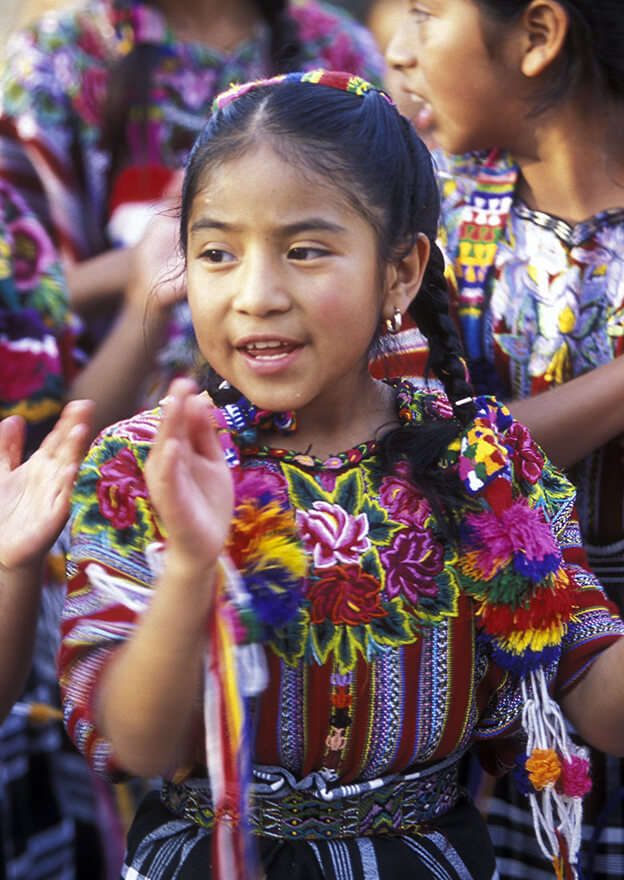
GoPhil’s newest partner, Comunidad La Esperanza (CLE), is a middle school founded in 2012 by a group of concerned mothers – several with teaching degrees – who didn’t want to send their children on the long commute to the nearest school in Chimaltenango, a dangerous area with a high prevalence of gang activity. Rather than travel the distance, many adolescents were dropping out of school and spending their time unsupervised on the streets, placing them at risk of gang violence and drug use.
Our visit began with a tour of the school where we visited the 7th, 8th and 9th grade classrooms. We were able to ask and answer questions of students – quickly so as to not disrupt their valuable classroom time. Several students made mention that their dream is to move to the United States because other members of their families had migrated there, while others mentioned that math is their favorite subject, or expressed their desire to continue their studies and become a teacher one day.
After our tour we sat down with Hilda, CLE Director, who shared the history and future plans for CLE, along with challenges and successes of the school. A neighbor who wanted to practice his English joined the discussion to translate for us, and a team of past students presented us with a delightful lunch that they had prepared for our visit. Having met Byron during our last visit in 2018, he and I reminisce of that past visit and I share Christina Bruce’s most recent blogpost with him, in which she highlighted his remarkable story.
Equity is a core and guiding principle at CLE, a school which believes that all children deserve a chance (and a second chance where needed) to succeed. CLE passionately believes that with sufficient investment, knowledge, encouragement and role models to look up to, the children of Chimaltenango can and will transform their community.
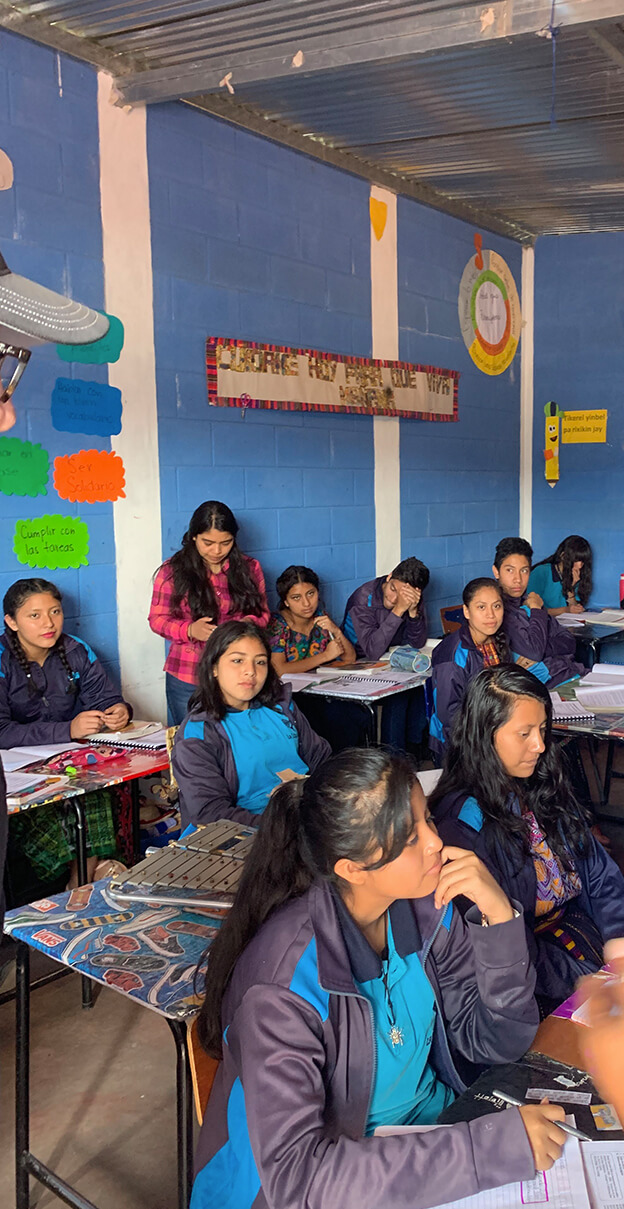
2. POVERTY (and Education)
- The number of people living in poverty in Guatemala has increased more than 22% in the last 10 years alone. (Source: United Nations)
- More than half of the total population of Guatemala lives below the poverty line, and poverty among indigenous peoples averages 79%. (Source: CIA)
- It is estimated that more than 40% of the indigenous population lives in extreme poverty. (Source: CIA)
EntreMundos was established to shift the power imbalance and elevate smaller, local organizations, associations and grassroots groups. With a database of over 900 local NGOs, EntreMundos helps give these resilient groups the opportunity to defend and promote human rights of the most marginalized populations in Guatemala.
Workshops organized by EntreMundos are aimed principally at nongovernmental, community, and grassroots organizations with humanitarian missions – primarily in the fields of development cooperation, awareness-raising, social education and advancement – that aim to make the most of the resources available in their local communities to reach objectives in the most effective and sustainable way possible.

We sit down with EntreMundos Director, Yessica Pastor and Capacity Building Program Director, Lourdes Aguilar, to discuss GoPhil’s recent support of EntreMundos’ local capacity-building efforts for rural, impoverished, and mostly indigenous Mayan communities in Guatemala, including the piloting of virtual trainings. Virtual trainings are offering an incredible opportunity to reach groups that don’t have the financial ability to travel to the EntreMundos headquarters.
In the words of EntreMundos Director, Yessica Pastor, “GoPhil and EntreMundos are both looking to strengthen the impact of grassroots organizations through training and education and building solidarity among organizations, donors, and direct constituents. Because we share these values, vision, and approach, we are creating trust as partners. We work together to determine how best to use the funds and respond to needs as they arise.”
3. MALNOURISHMENT (and Education)
- More than half of all Guatemalan children under age 5 are chronically malnourished, making it the sixth-highest rate of chronic malnutrition in the world. The prevalence of malnutrition reaches as high as 70% in Totonicapán, Quiche and Huehuetenango – rural indigenous regions of Guatemala. (Source: USAID)
- Childbearing often begins in adolescence in Guatemala, which also contributes to a high prevalence of low birth weight, which in turn, contributes to a high prevalence of chronic malnutrition among children under 5 years old.
- Due to a lack of access to safe drinking water nationwide, the government has added “2 liters of bebida gaseosa (soft drink)” to the Canasta Básica (recommended daily diet) because buying 2 liters of soft drink is less expensive than buying or providing access to water. (Source: Canasta Básica Alimentaria)
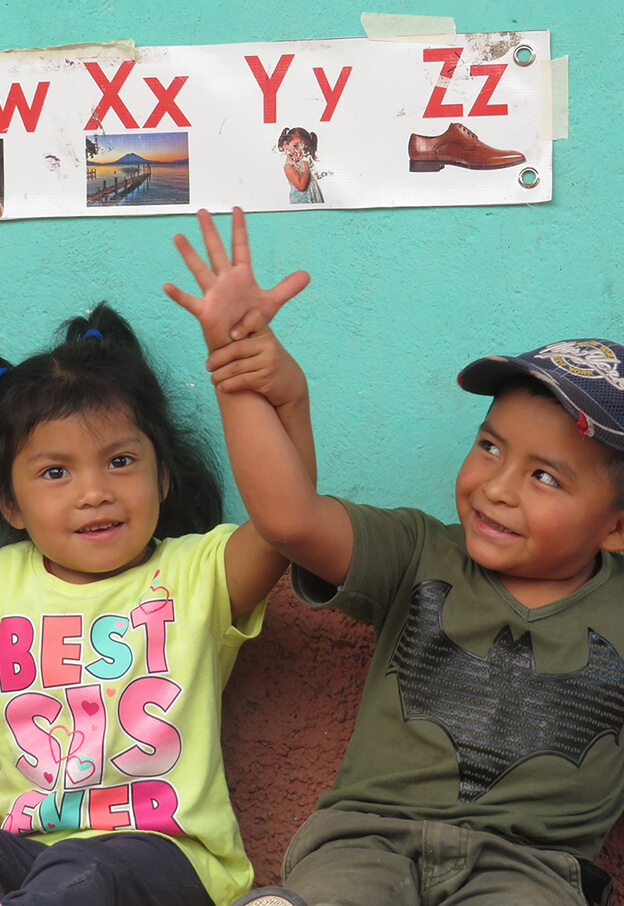
Guatemala is a country where preschool is not mandatory and the distances and the lack of teaching staff make it almost impossible to get off to a great start in first grade. In fact, half of Guatemalan children don’t enter a classroom for the first time until the age of seven, and as a result of almost non-existent preparation for the challenges of attending school, a whopping 27% of students throughout the country drop out or fail the first grade.
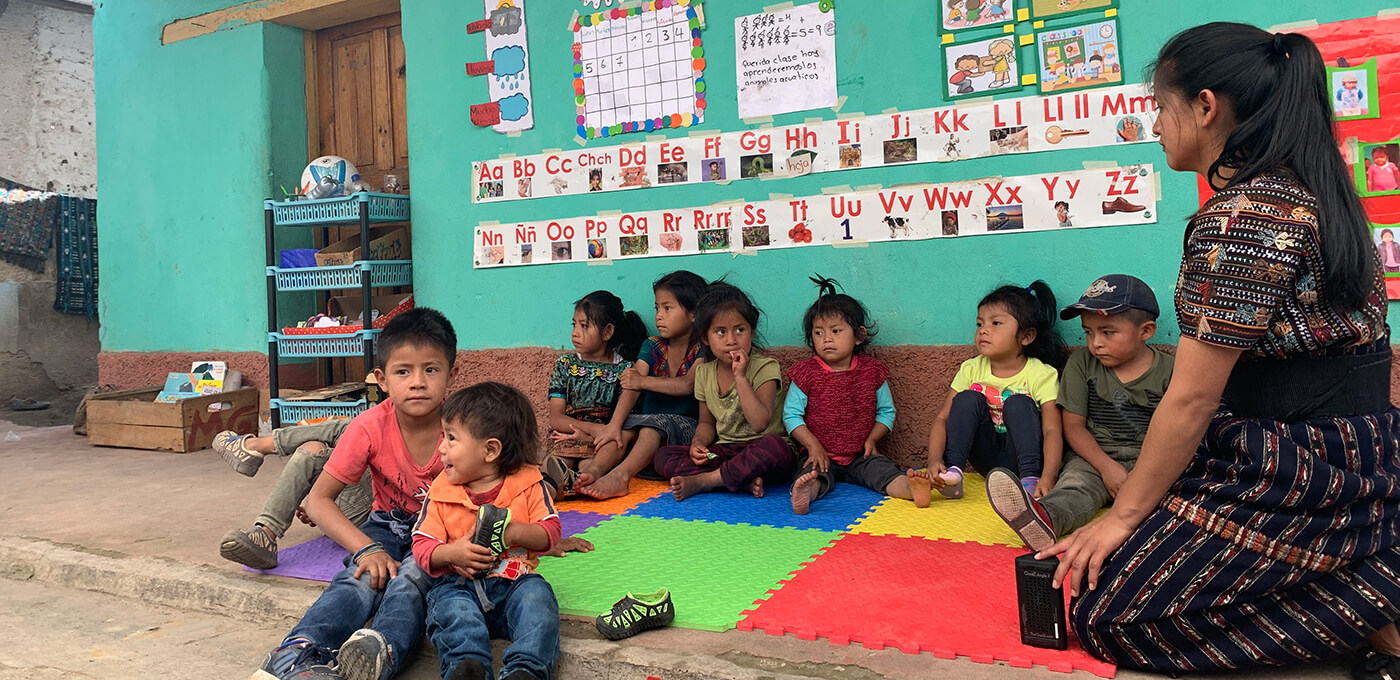
Aula Mágica (“Magical Classroom”) offers children an important boost by providing preschool programs to underserved areas in hard to reach, rural Guatemala – nearly 300 children to be exact across 33 rural classrooms. Many organizations in Guatemala focus on increasing access to primary and secondary education, but very few include pre-primary education, especially in rural areas. Aula Mágica’s focus on pre-primary education addresses the problem at the root cause and prepares children to not only attend school, but stay in school and succeed once they reach the primary level.
To boost the academic program’s attendance and make a larger impact on the health of students, Aula Mágica also provides a nutritious snack as well as Atole, a maize-based drink native to Central America, for all students. Last year we learned that between April and November, Aula Mágica children receiving a nutrition supplement had a 74% reduction in anemia. This is said to be one of the highest reductions seen in a rural program, and for many students attending classes at Aula Mágica, this may be their only meal with nutritious value of the day.

On arrival to Rosita’s classroom (pictured above) in the hilltop village of La Concepcion, the 8 students in attendance are excited by our visit and welcome us with a song and dance, but quickly move their attention toward Señor Panda, a pre-recorded audio program supplied by Aula Mágica to teachers with pre-planned daily lessons. The day’s subject was aquatics – the difference between freshwater and saltwater, the mammals that live within each along with the Spanish vocabulary. After the interactive audio lesson, each student was asked to use recycled materials to create an artistic rendition of a fish.
4. LANGUAGE (and Education)
- While Spanish is the official national language of Guatemala, 23 languages other than Spanish are officially recognized, nearly all of Mayan origin.
- Approximately 39.8% of the population speak an indigenous language as their primary language. (Source: GraphicMaps)
- Public education is primarily taught in Spanish, while the majority of indigenous children speak only their native Mayan languages when they enter a classroom for the first time.

In the late 1980’s, Jane Mintz, a social worker and textile weaver, traveled to Guatemala and became enamored with Guatemalan textiles. She began exporting the textiles and soon realized that the middlemen were profiting much more than the textile artists themselves. After personally contacting the artists in various villages, Jane began purchasing directly from small groups of women who had lost their husbands to the civil war’s ethnic cleansing.
In 1996, Jane founded Tradiciones Mayas (Maya Traditions) which works with groups of artisans in six villages of Guatemala and also functions as a social enterprise by helping get the textiles into the international market, providing artisan development, community health and student sponsorship. The organization is certified as a World Fair Trade Organization, one of the few in the country. Tradiciones Mayas functions as a social enterprise and in addition to helping get the textiles into the international market, provides artisan development, community health and student sponsorship.
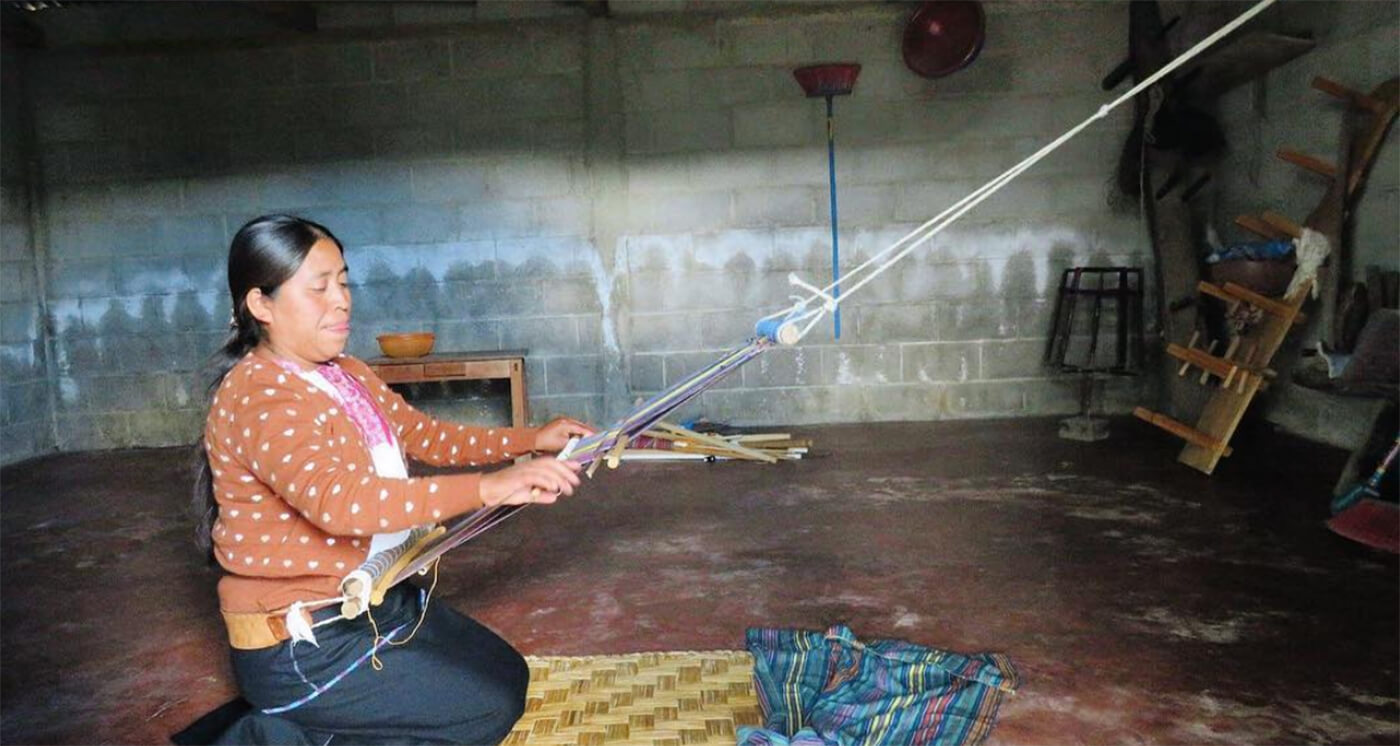
During our visit to GoPhil’s newest pilot grant partner, Tradiciones Mayas, Montse (Director) explained: “The education level of the majority of our artisans has always been very low – primary education at best, and most of them did not graduate from the 6th grade. Honestly, they were afraid of leaving their communities because they have to use Spanish, and if they can’t, then they are worried that they are going to be lost and they won’t be able to get back home. As you can understand, that creates a big amount of fear for a person – not being able to communicate in the very country in which you live. So we sat down to discuss how we could organize Spanish classes within their communities – which then also gets tied to numeracy, mathematics, financial literacy and accounting.”
We were also able to meet and hear from two artisans who work with Tradiciones Mayas. Cristina sat with her son Andy on her lap and explained: “I am the third generation in my family to work with Tradiciones Mayas. My grandmother was one of the first artists to meet Jane, and my mother and I also weave for Tradiciones Mayas. With their support, two of my siblings have been able to go to attend college.”
5. HEALTHCARE (and Education)
- In Guatemala, it is estimated that basic health and nutrition services meet only 54% of the needs of the rural population. (Source: Centers for Disease Control and Prevention)
- The distribution of government funding towards development – education, healthcare, etc – averages $0.90 per person for Non-Mayans, and $0.30 per person for Mayans. (Source: ASSADE)
- In rural areas, there are approximately 3 health workers for every 10,000 inhabitants. In urban areas, there are 25 health workers for every 10,000 inhabitants. In 2016 it was estimated that 47.97% of Guatemala’s population lived in a rural area.

The day before our visit to ASSADE, a private health clinic in San Andrés Itzapa, I learned that there would be roadblocks across the country protesting governmental corruption as a result of the then upcoming Presidential Election which took place on August 11, 2019. Time and again, corruption has been a topic of conversation over coffee in the park with Maria Elena, founder of ASSADE.
Maria Elena’s son Julio, Director of Prevention Programs, Community Education and Development, shared in a blogpost about The Value of Community Health that: “…chronic corruption exacerbates [healthcare] problems and the ongoing lack of desire – on behalf of the government – to make a real change. This has resulted in health care becoming inaccessible, even though it should be a universal right to all. Guatemala’s health care system has a long-standing historical background of superficial attempts at repairing the current structure and seeking to make invisible the lack of need for preventative care…”
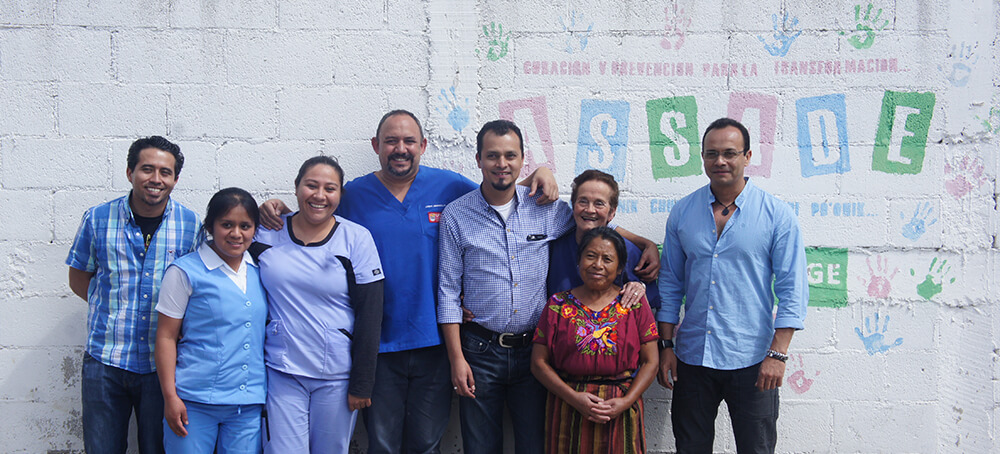
Amazing work happens at ASSADE, but for me personally, one of the most remarkable areas in which we have witnessed enormous growth in a very small window of time, is ASSADE’s Oral Health Program. Only 7% of the general indigenous population of Guatemala receive regular dental care, and nearly 98% of the children seen at the ASSADE Dental Clinic have cavities, a much higher rate than normal. With the support of generous GoPhil donors and friends, ASSADE has achieved expansion of their dental clinic services by hiring a full-time dentist and a full-time dental technician, and during every visit the number of people waiting to see the Dr Luis grows and grows.
Additionally, ASSADE’s Communitarian Oral Health Project harnesses the potential of local, young women in nearby rural areas by training them to become “Communitarians,” who serve as Oral Health Program public liaisons within their own communities. The Communitarians are tasked with improving oral health conditions through local training on dental hygiene and nutrition, working with the schools and community leaders, and scheduling regular, mobile dental clinics in the villages for patients who cannot travel to San Andrés Itzapa. Not only does this program work to address the basic oral health crisis in the area, it also provides young women with highly sought after skills and professional development.
“I was so taken by Guatemala – a beautiful country with beautiful people and wonderful GoPhil partners. What struck me most was how much people are able to do with so little. While there are certain programs that touch you more than others, each one was uniquely special. I loved seeing kids given a second chance at school that might have otherwise been in a gang or dealing drugs (Comunidad La Esperanza); meeting the third generation of weavers whose siblings had gone to college because of the program (Tradiciones Maya); young children learning Spanish and playing with other children rather than working in the fields at 4 years old (Aula Mágica); and disabled people having the opportunity to work and learn life skills (Centro Maya). My personal favorite was visiting ASSADE, because of the services they provide primarily to women, the integration of traditional beliefs and rituals, and Julio’s ability to share such a compelling story.”
– Cynthia Feiden-Warsh, GoPhil Traveler & Ambassador
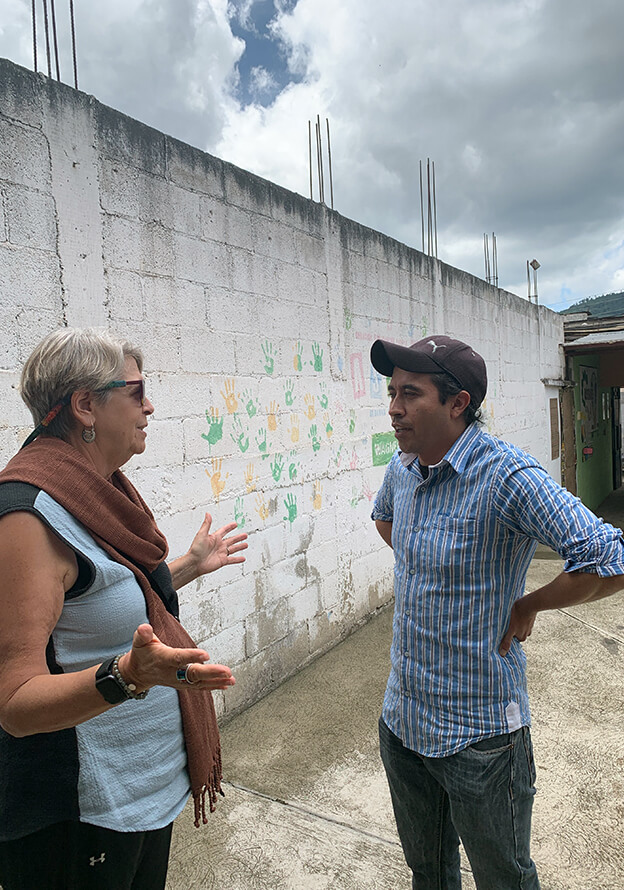
6. INCLUSION (and Education)
- In 2017, MP Fernando Linares Beltranena stated that “Disabled people only constitute an expense for the country” of Guatemala.
- According to Inclusion International, which advocates for the human rights of disabled people worldwide, 98% of children with disabilities do not attend formal education. (Source: The Lancet)
- 77% of persons with disabilities in Guatemala do not have access to rehabilitation services, and 53% cannot read or write. (Source: United Nations)

One thing I learned during our very first GoPhil trip was that Guatemala is a country steeped in tradition, and also superstition. For many people, having a child with a disability is understood to be a bad omen, or even a curse. As such, children and adults with disabilities are oftentimes hidden away from society. Families also do not have the knowledge or financial means to assist with their child’s special needs. Discrimination which exists towards people with disabilities worsens when those people – oftentimes children – are indigenous, and worsens even more when they are disabled, indigenous women.
Centro Maya has been working to promote the rights of people with special needs in Guatemala for over three decades. Providing basic services for the progress and development of citizens with disabilities is technically a responsibility of the Guatemalan government; in reality, these services unfortunately remain nonexistent, particularly in rural, indigenous areas. Centro Maya not only steps in to provide these integral services around Lake Atitlan and surrounding areas, but advocates politically for disability rights and more widespread, government services.
In doing research to better understand the scope of persons with disabilities in Guatemala, I recently came across an article from 2005 which discussed the work of Centro Maya, but one thing really stood out as it relates to a father’s thoughts on his disabled daughter: “Look, you shouldn’t have breastfed the girl when she was little, that way she would have died. Now you must take care of her, it’s not my fault that the girl was born that way.”
The true scale of Centro Maya’s work is indescribable, really, but you feel it vibrating through you as soon as you step through the door. It is a place of angels, of magic, of hope. It is always a moving experience for travelers, especially with Viviana giving the tour. We visit the occupational therapy, rehabilitation and speech therapy rooms and meet the amazing staff who help this place run day in and day out. Their smiles are contagious and they are full of love and knowledge.
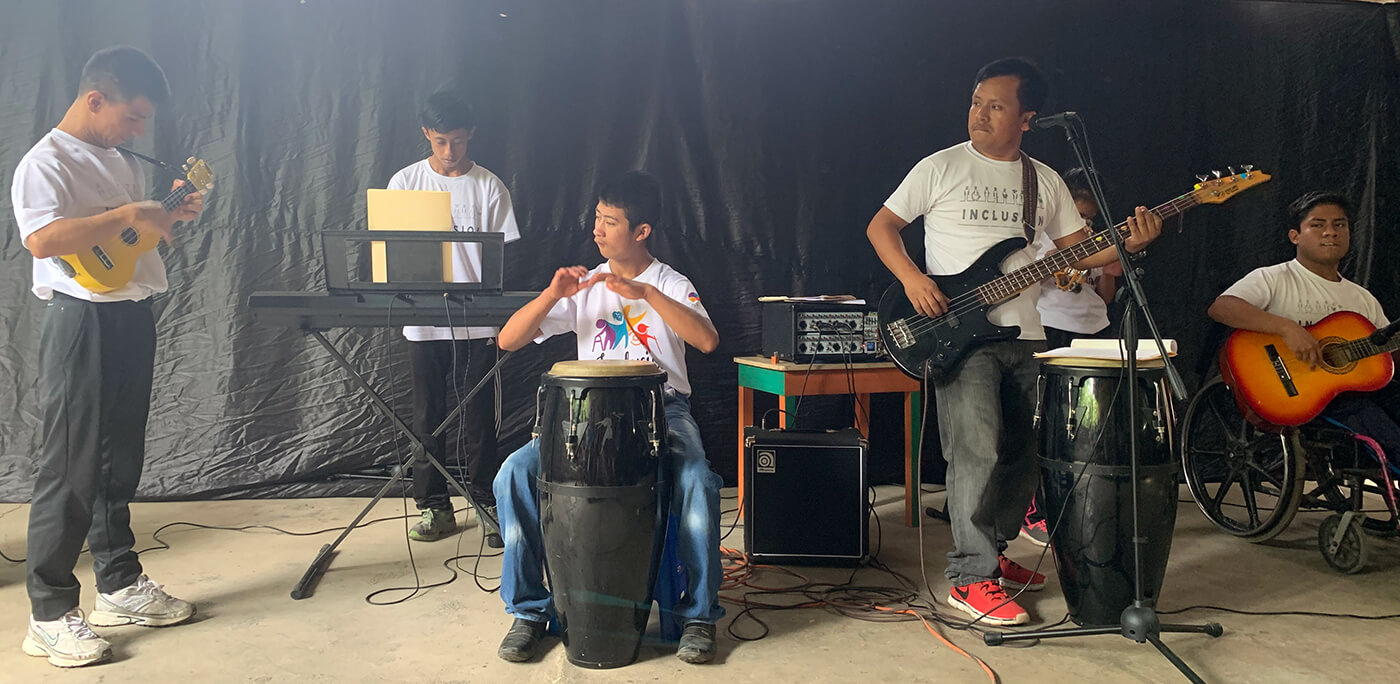
We make our way to the dining hall, where a number of Centro Maya students have gathered, several of whom prepared a presentation for our visit. Wilda (deaf) shyly performs two pieces on a piano keyboard for her very first time. A five member boy band takes the stage and a father rushes into the room, arriving late from a nearby village, smiling from ear to ear and incredibly proud to see his two sons on stage. He sits beside his wife and takes photos of the entire performance. GoPhil traveler Richard takes over the drums during the final number and receives a round of applause. Everyone’s heart is full. Everyone is smiling.
“My first impression of Guatemala was: how beautiful! More importantly, however, was seeing so many dedicated people doing so much with so little. The programs we visited were inspiring – all of their missions, as well as the women and the young people they served. I was particularly touched by Centro Maya and the commitment of the staff there, doing so much without the help of the government.”
– Richard Warsh, GoPhil Traveler

We take a quick stroll to Alma de Colores, a program that provides labor inclusion and skills development, serving as a local cafe sourcing produce from Centro Maya’s very own organic gardens. Leticia, Centro Maya’s Director, shares stories with us about the history and founding of Centro Maya. She tells us about her son, who was born with a disability, and how in seeking answers she was discriminated against, ignored, told that she was dirty because she was indigenous. That she would never be able to care for her son. Every time I hear this story it digs deeper into my soul. And no matter how much I absorb it, I have not lived it like Leticia and her son have.
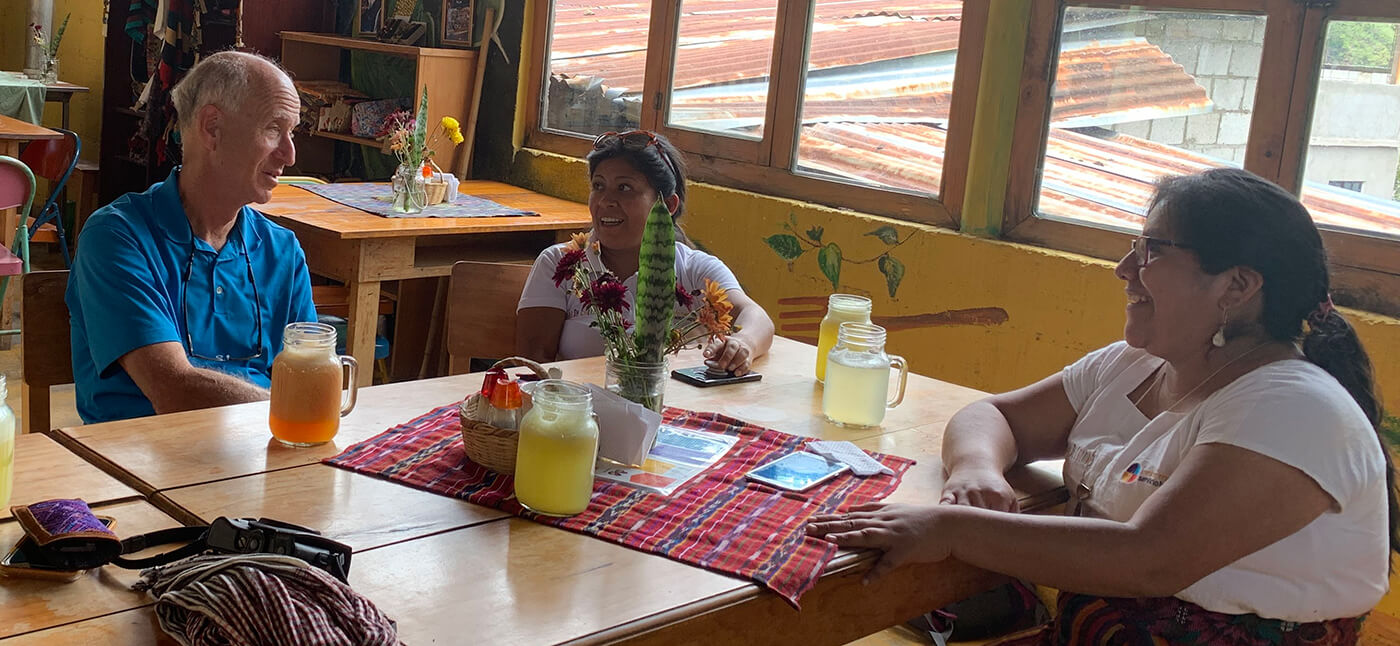
Each time that I write about a visit to Centro Maya, I struggle in describing how it feels. But I assure you – once you have felt it, you will never feel the same again. Centro Maya holds a very special place in my heart that I tap into on a daily basis when I need to reflect on the heartbeat of this world that reverberates through us all.
I find great solace in knowing that you, in reading this, are part of a collective care that is actively engaged in changing the world. Through knowledge and collaboration, through funding and time, through partnership and passion. If I have learned one thing during my many visits to Guatemala, it is that all of the people sitting around the table at GoPhil – staff, donors, programs, participants, friends – we are all one.
We all strive toward a humanity in which everyone can thrive.
